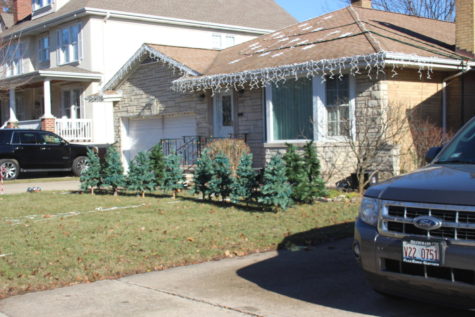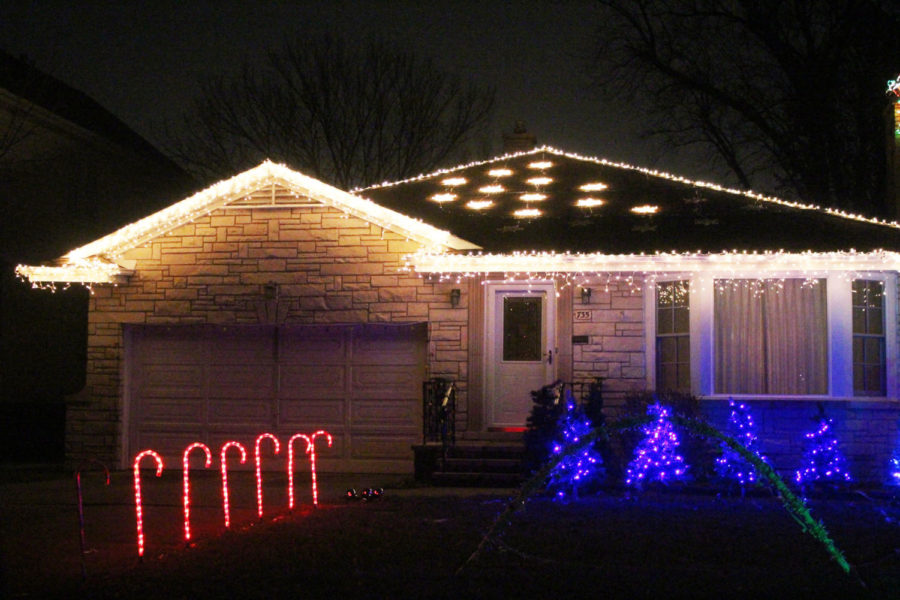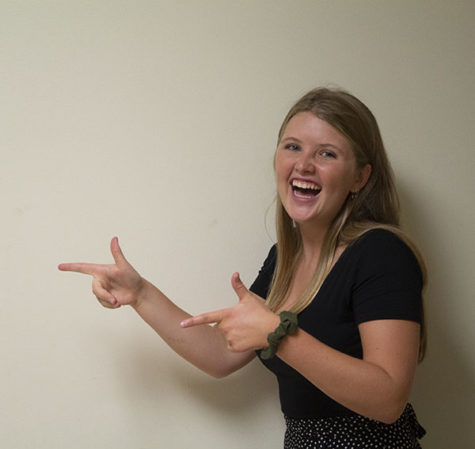LT teacher displays light show in yard
December 21, 2018
 Physics teacher Robert Sherman has always loved decorating his house for Christmas. He placed third in a decorating competition as a kid, and continued to decorate his dorm for Christmas in college. Ever since 2004, Sherman has been conducting a light show at his home. He originally did the show every year, but as it got larger and more difficult to set up, he did it every other year.
Physics teacher Robert Sherman has always loved decorating his house for Christmas. He placed third in a decorating competition as a kid, and continued to decorate his dorm for Christmas in college. Ever since 2004, Sherman has been conducting a light show at his home. He originally did the show every year, but as it got larger and more difficult to set up, he did it every other year.
“It’s something fun- a hobby of mine,” Sherman said. “My kids and the neighborhood enjoy it and I have a big affinity for lights.”
The show goes from Black Friday to New Year’s Eve, Sherman said. People can sit in their cars at 735 S. Brainard Ave., with the radio station 89.1 FM on, and watch the lights flicker to the music.
“The lights matched up perfectly with the beat for each song,” Anna Scarpaci ‘20 said. “It was very cool.”
At first, the home was decorated with solely University of Illinois lights, and had only six strands of lights, Sherman said.
“I am a huge fan of University of Illinois, so my lights revolved around the team, but as the team got worse I decided to build a bigger show,” Sherman said.
Brainstorming for the ideas begin as early as summer, Sherman said. Setting up the equipment- 96 strands of lights, wires, chords, and arrangements- takes about two weeks, while programing the songs takes a few months.
“Comparing my power bills from years with the show and years without, I have found an increase in about 400 kilowatt hours of energy,” Sherman said. “At 11 cents per kilowatt hour of energy the cost is around $40 to 45 per hour.”
The show consists of seven songs, lasting a little over 20 minutes, Sherman said. A computer system in the garage runs the seven song loop daily on the radio station from 5 p.m.-11 p.m.
“I try to add something different every other year,” Sherman said. “This year Santa is relocated, and my son programed a song called Bell Carol Rock.”
To get the lights coherent with the music, Sherman used a system called Vixen. The system sends signals to the circuit board of the lights to turn them on and off. The flickering is hand programed on a spreadsheet, and the process involved repeatedly listening to snips of the songs.
“You can really tell how much effort is put into the show,” Scarpaci said.





















![Movie poster for '[Rec]" (2007).](https://www.lionnewspaper.com/wp-content/uploads/2023/04/rec-640x900.jpg)



